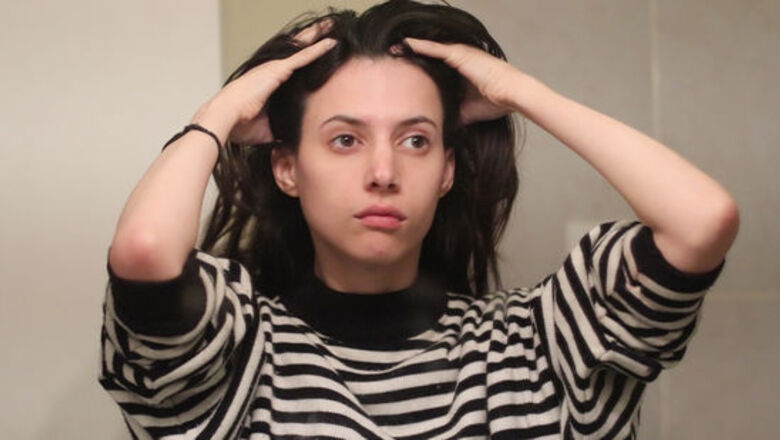
views
X
Expert Source
Patrick EvanProfessional Hair Stylist
Expert Interview. 17 January 2019.
Whether you are out of shampoo, or looking for a more natural lifestyle, consider washing your hair with just water. Keep in mind that it may take 2 to 16 weeks for your hair to adjust.
Preparing Your Hair
Start the process 8 to 12 hours before you plan to wash your hair. While you can certainly do it right before jumping into the shower, it would be better to start preparing your hair 8 to 12 hours beforehand. This will allow the oils released during the process to travel down the hair shaft and make it easier to work with. If you recently washed your hair, wait until it starts to feel oily. This is not a process you want to do on a daily basis. Make sure your hair is dry and tangle-free. If your hair is knotted, gently brush it out starting from the ends. This will make the rest of the prep work easier.
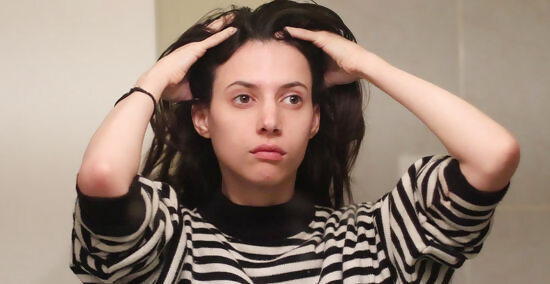
Massage your scalp with your fingertips. Push your fingertips through your hair and rest them against your scalp. Gently massage your scalp with your fingertips using quick, short, but gentle motions. Be sure to massage your entire scalp. This process is known as "scritching" and helps loosen the oils naturally secreted by your scalp. Make sure that you are using your fingertips, not your nails.
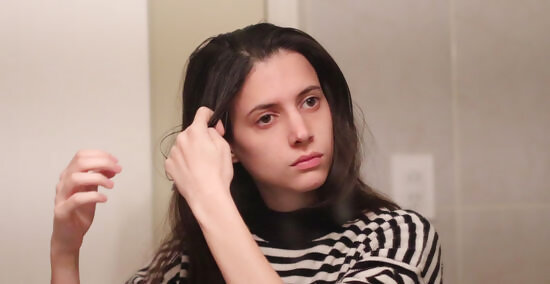
Run thin sections of hair between your fingers. Take a thin section of hair, and pinch it between your fingers at the roots. Slide your fingers down towards the ends. Repeat this process throughout your hair. This is known as “preening” and helps distribute the oils further. It may be easier to start at 1 side of your part, work your way down, then do the other side. This way, you can be sure that you didn’t miss anything. You can do this while brushing—run the boar bristle brush through the hair section, then follow up with your fingers. Think of these sections as wide ribbons. You want them to be relatively thin, and just a little shorter than the length of your finger.
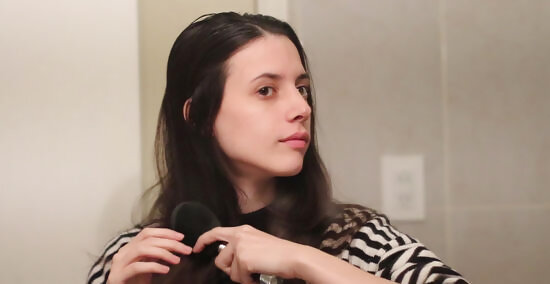
Brush your hair with a boar bristle brush. Make sure that the brush is clean and of good quality. Work in small sections, starting from the ends of your hair; never drag the brush straight down through your hair without detangling the ends and mid-lengths first. This helps further distribute the oils throughout your hair. It also helps gently detangle it and smooth it out. If your hair is long or very dry, add some oil to the ends. Coconut oil or shea butter are great choices.
Washing Your Hair
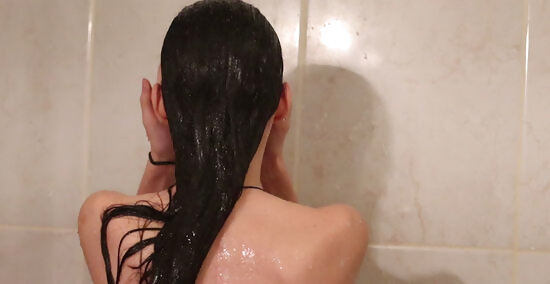
Get your hair wet using very warm water. The temperature is key here, as warm water will open up the cuticles of your hair. You don’t want it to be too hot, or you'll risk damaging your hair. At the same time, however, you don't want it to be too cool, or it won’t break up the oils on your scalp. You should do this 8 to 24 hours after you scratched, preened, and brushed your hair. If your hair got tangled in the meantime, brush it out. Hard water is a hit-or-miss. It works for some people, but not for others. If hard water doesn't work for you, install a water-softening filter.
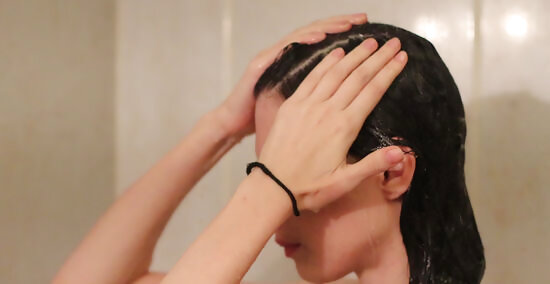
Part your hair to reveal your scalp. This is especially important if you have long or thick hair. You will be scratching your scalp again, but this time, you want the water to hit it. Parting your hair will allow for this to happen. It does not matter where you part your hair. You'll be doing this all over your scalp!
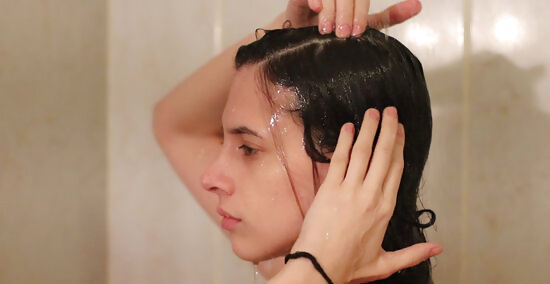
Scritch your scalp, focusing the water stream on your scalp. Place your fingertips against your exposed scalp and gently massage it. Do this while standing under the shower so that the running water hits the scalp. This will help dislodge the dirt and oils.
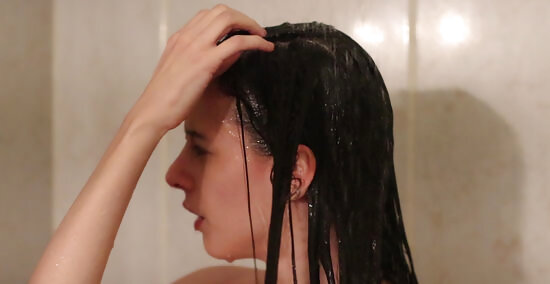
Preen the water through your scalp if your hair is oil. This may not be necessary if your hair is dry, but if your hair tends to get oily, or if you sweat a lot, preening would be a good idea. Simply pinch a thin strand of hair between your fingers, then run your fingers down the length of the strand, from roots to tips. Do this step twice, once to either side of the part. If your hair is very oily, you may have to preen the water through it.
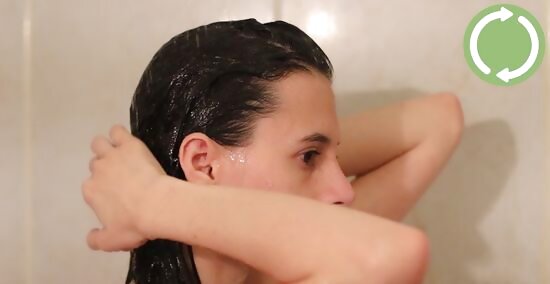
Repeat the process all over your scalp. It would be a good idea to work systematically here so that you don't lose track of the areas you already cleaned. Finish 1 side of your head first, then do the other side. Finish with the back. Pay extra attention to your hairline and other areas that tend to get oily.
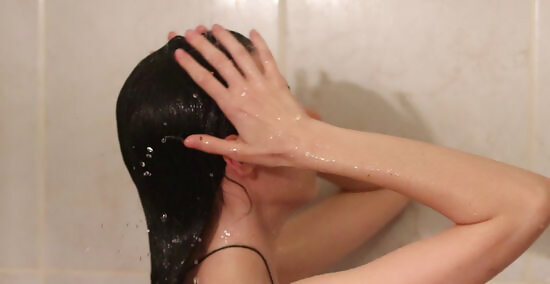
Rinse your hair with cold water. If this is too uncomfortable for you, step out from under the shower stream, then lean far back so that just your head gets wet. This will make it more bearable.
Drying Your Hair
Pat your hair dry with a T-shirt or microfiber towel. Do not rub your hair or use a regular towel, as this can lead to frizz. Simply pat your hair with a T-shirt or microfiber towel to soak up the excess moisture from it. Don’t worry about completely drying your hair just yet.
Comb your hair with a wide-toothed comb, then apply some oil, if needed. Like with brushing, start from the ends first. Once you have detangled the ends and mid-lengths, you can comb your hair down from the roots. If your hair is tangled, apply 1 to 2 drops of hair oil to the ends and mid-lengths. This will help lubricate the strands and reduce frizz. Do not use a regular hair brush. Wet hair is delicate, and a regular brush will damage it.
Allow your hair to air dry, if possible. You can use a T-shirt or microfiber towel to help soak up more water, but don’t rub it. Many people find that their hair actually dries faster if they wash it without any products. Once your hair is dry, you can style is as you like. It would be best to avoid too many products, however, as these can lead to build-up.
Repeat the process every 3 to 7 days. Again, this is not something you want to do on a daily basis. The reason for this is simple: the more often you wash your hair, the more oil your scalp will produce. If you wash your hair less often, however, your scalp will be trained to produce less oil, which means your hair won’t get as dirty. Give your hair 2 to 16 weeks to adjust to this method.
Trying Other Methods
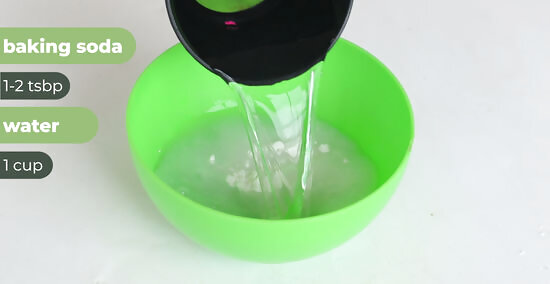
Try a solution of baking soda for a gentle cleanse. Stir 1 to 2 tablespoons (13 to 26 g) of baking soda into 1 cup (240 mL) of warm water. Pour it over your head and massage it into your scalp. Wait 3 to 5 minutes, then rinse it off. Follow up with conditioner or an apple cider vinegar rinse. For a deeper cleanse, try 1 part baking soda and 1 part water.
Use a solution of water and apple cider vinegar as a gentle cleanser. The exact proportions vary, but most people recommend starting with a solution of 1 to 2 tablespoons (15 to 30 mL) of apple cider vinegar and 1 cup (240 mL) of water. As your hair gets used to this, you can move up to 1 part vinegar and 1 part water. Simply pour the solution over your head, massage it into your scalp, then rinse it out. Even though this is gentle on your hair, it is not gentle on your eyes. Be careful not to get the solution in them! Don't worry, the smell will go away as your hair dries. You can use this on its own, or use it right after the baking soda method. This solution is great for dandruff, oily hair, dry hair, and build-up. It's also great if you have hard water and will make your hair shiny. For best results, use pure apple cider vinegar with the residue at the bottom of the bottle.
Try diluted lemon juice as an alternative to apple cider vinegar. It won't have the same softening and shine-adding properties, but it will help get rid of excess oil. Simply squeeze the juice of 1 lemon into 1 cup (240 mL) of warm water, then pour that over your head. Massage it into your scalp and rinse it out. You can also use lemon juice to lighten your hair naturally.
Consider co-washing if you have dry, curly, natural, or wavy hair. Co-washing is just like washing with shampoo except that you use conditioner instead. While you'd normally focus conditioner on the ends of your hair, you actually do want to apply it to your scalp while co-washing and massage it in. Once you rinse your hair out, you don't need to use an additional conditioner. Co-washing is not recommended for oily or greasy hair because it doesn't contain enough detergent to get the grease out. You may have to scrub your scalp more than you normally would in order to get it squeaky-clean.
















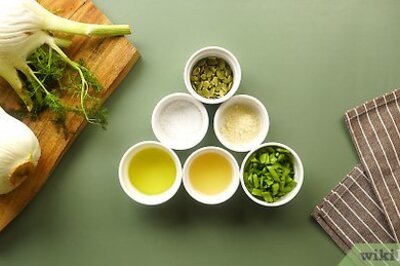

Comments
0 comment